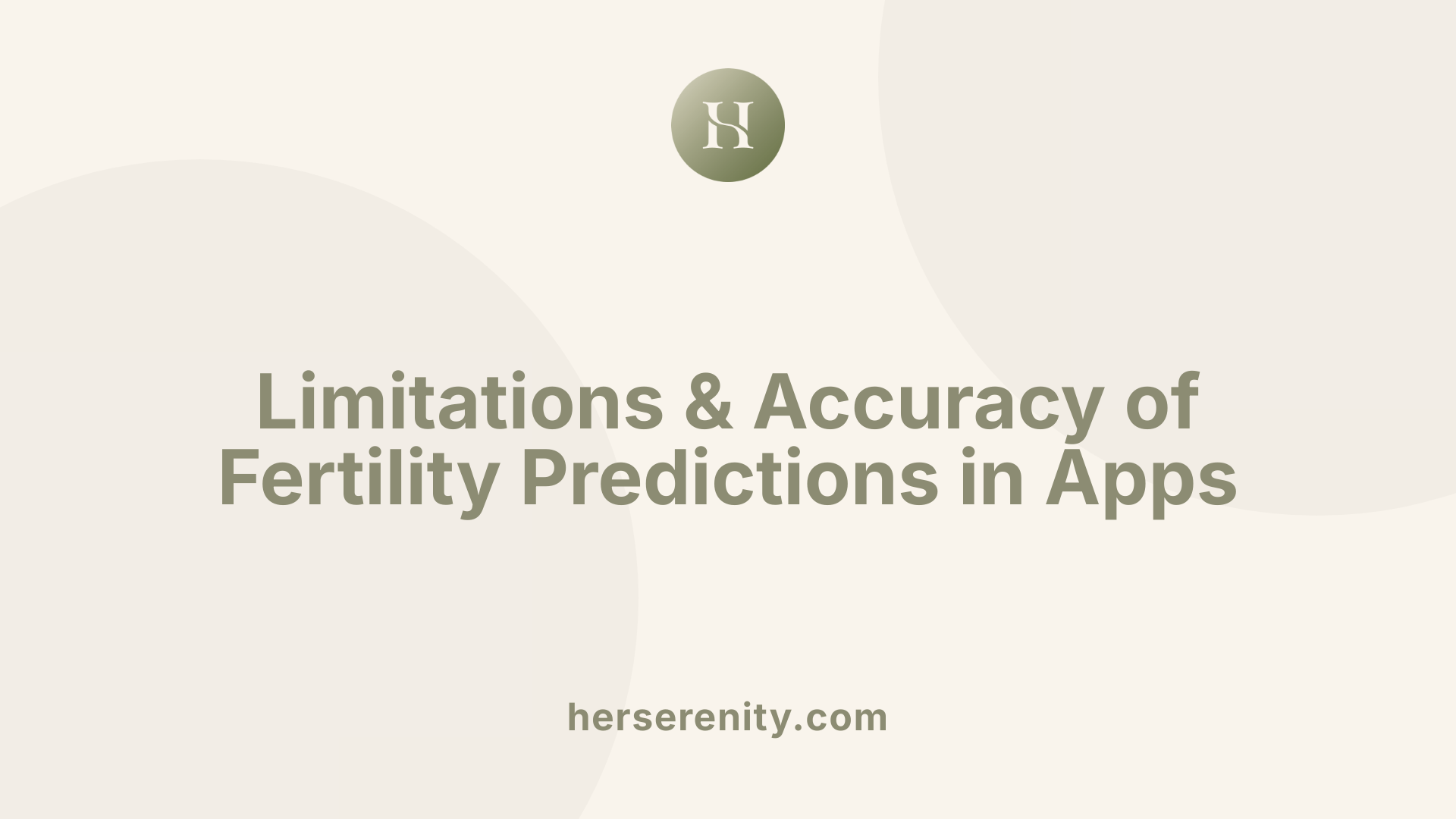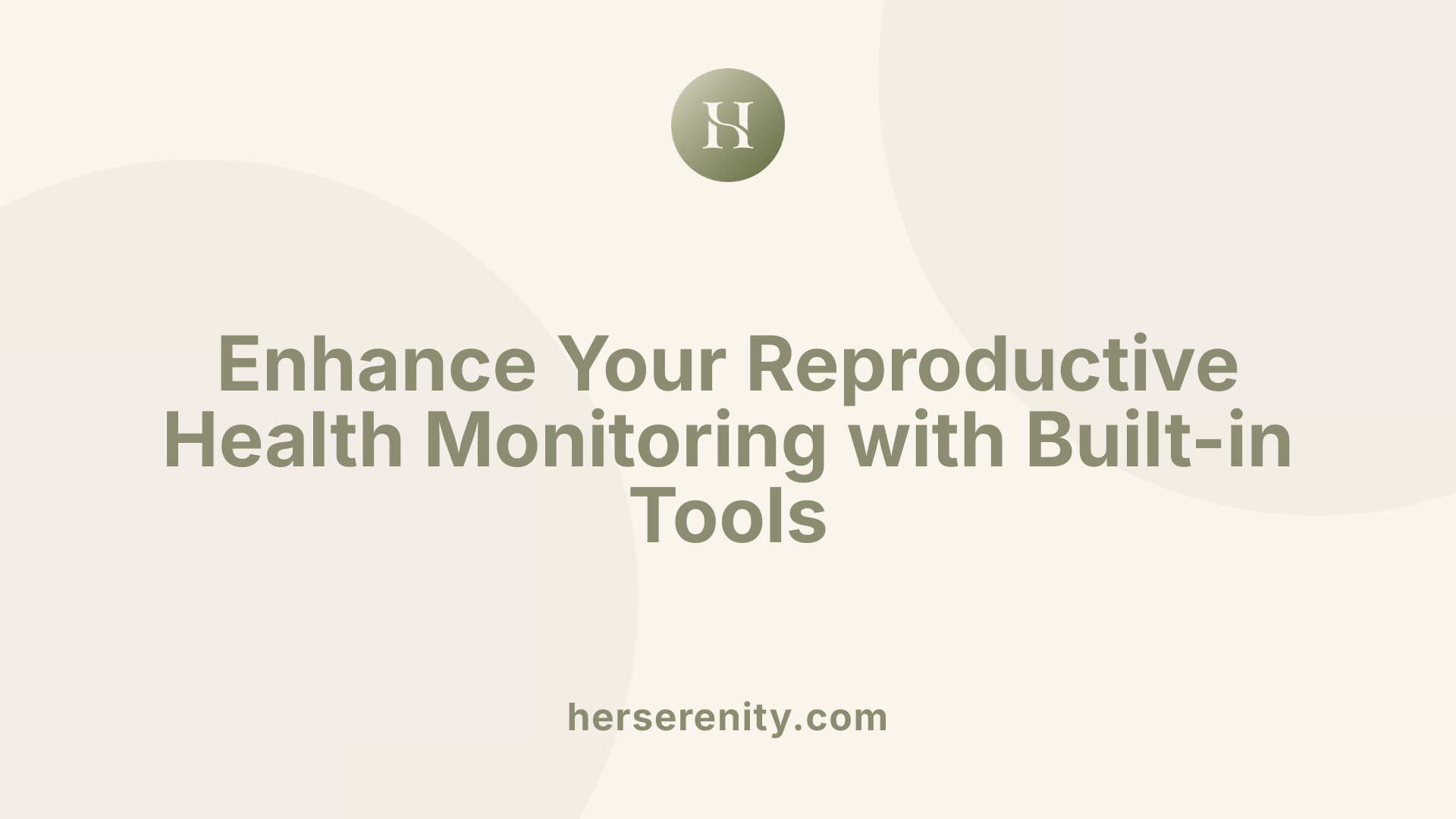Using fertility apps to track your cycle
Digital Tools for Reproductive Awareness

Understanding the Role of Fertility Apps in Modern Reproductive Health
In an era where digital health tools are transforming personal healthcare, fertility apps have emerged as popular resources for women seeking to understand and monitor their menstrual cycles. These applications serve as accessible, convenient platforms to track reproductive health, predict ovulation, and support family planning goals. This article explores the functionalities, benefits, limitations, and practical considerations of using fertility apps to track your cycle.
What Are Fertility Tracking Apps and How Do They Work?

What are fertility tracking apps and how do they work?
Fertility tracking apps are digital tools designed to help women understand their reproductive health and identify fertile periods within their menstrual cycle. These apps, including popular options like Clue, Flo, Glow, Fertility Friend, and Ovia, function by collecting and analyzing personal health data such as cycle dates, basal body temperature (BBT), cervical mucus, symptoms, mood, and other cycle-related information.
Most of these apps operate on a combination of calendar-based methods and user-input data. For example, users enter the start and end dates of their periods, along with information from ovulation predictor kits (OPKs) or basal temperature readings. The apps then apply algorithms—sometimes enhanced by machine learning or statistical models—to estimate the fertile window, commonly falling around days 11 to 21 in a typical cycle.
Data collection methods
To improve prediction accuracy, many fertility apps encourage consistent data entry. Tracking basal body temperature involves taking a daily measurement with a thermometer, often digital or compatible with wearable devices. Monitoring cervical mucus characteristics provides additional clues about ovulation timing. Symptoms like breast tenderness, cramping, and mood changes are also logged.
Some apps, such as Natural Cycles and Proov, incorporate testing kits or devices that directly measure hormone levels or ovulation markers, increasing the precision of fertility predictions. Apps like Flo and Clue utilize regular symptom diaries and cycle data to generate insights, while others may sync with external devices or hormone tests to enhance accuracy.
Methods used for prediction
Fertility apps primarily rely on:
- Calendar-based methods: Estimating fertile days based on cycle length and past data.
- Basal body temperature (BBT): Detecting the slight temperature rise that occurs after ovulation. Apps log and analyze daily temperature readings.
- Cervical mucus tracking: Observing the physical properties of cervical mucus to gather fertility signals.
- LH tests and hormone levels: Some apps integrate results from ovulation predictor kits to pinpoint ovulation.
Advanced apps like Natural Cycles and Premom combine these methods, analyzing temperature patterns and hormone test results for more accurate predictions.
Accuracy and limitations
While fertility apps can help identify likely fertile periods, they are not perfectly reliable. Their prediction accuracy generally ranges from about 25% to 50%, which is significantly lower than more direct methods like ovulation predictor kits with around 95% accuracy.
Various factors can affect the accuracy of these apps, including irregular cycles, stress, illness, medication, lifestyle, and conditions like PCOS. The inherent variability of women’s cycles means that predictions are estimations, not guarantees.
Research shows that the prediction models in some apps are not significantly better than random guesses, with studies noting prediction accuracy around 21% for some cycle-tracking apps.
Advisory on supplementary methods
Given these limitations, fertility apps should be viewed as tools to increase awareness and understanding of one's menstrual and fertility patterns rather than definitive predictors. For women actively trying to conceive, combining app insights with ovulation predictor kits, fertility hormone testing, and consultation with healthcare providers offers a more comprehensive approach.
For contraception purposes, relying solely on app predictions is not advised, as the risk of pregnancy remains, especially if cycles are irregular. Using barrier methods or other reliable contraception alongside app predictions enhances safety.
Consulting with OB-GYNs for personalized advice and diagnosis can improve fertility tracking efforts and address underlying issues affecting ovulation. Overall, these digital tools are valuable for tracking and education but are most effective when used in conjunction with medical guidance and appropriate diagnostic tests.
Features Common to Cycle Tracking Apps
 Fertility and cycle tracking apps are designed to help women understand their menstrual health and fertility status through a variety of features. One of the most fundamental functionalities is the menstrual calendar logging, where users can record the start and end dates of their periods, average cycle length, and pattern changes over time.
Fertility and cycle tracking apps are designed to help women understand their menstrual health and fertility status through a variety of features. One of the most fundamental functionalities is the menstrual calendar logging, where users can record the start and end dates of their periods, average cycle length, and pattern changes over time.
Another key feature is ovulation prediction. Apps analyze the data entered by users—such as cycle length and basal body temperature—to estimate fertile windows, helping women plan conception or avoid pregnancy.
Symptom tracking is also prevalent. Women can log mood, cramps, breast tenderness, cervical mucus, and other physical signs. This data helps identify patterns and provides insights into overall reproductive health.
Monitoring basal body temperature (BBT) is common in many apps. By recording daily temperature readings, users can observe subtle shifts indicative of ovulation, enhancing prediction accuracy.
Reminders and alerts are built-in tools to prompt users for testing, medication, or ovulation prediction kit use, ensuring consistent data collection. These notifications help maintain regular tracking habits.
Some apps offer additional health tracking features like mood, sleep quality, nutrition, or hydration, providing a broader understanding of factors influencing fertility.
While these tools mainly serve individuals trying to conceive or manage their menstrual health, they also contribute to research and awareness. Most apps incorporate population data to refine ovulation predictions, but effectiveness depends on consistent and accurate data entry.
What features are common in fertility apps for cycle tracking?
Fertility apps for cycle tracking typically include tools for recording menstrual cycle length and ovulation dates, enabling users to monitor their reproductive health. They often include ovulation prediction and fertile window estimation to assist users in conception planning or contraception. Symptom logging, such as mood, cramps, and other signs, is common to help users identify patterns and manage symptoms. Many apps also incorporate basal body temperature tracking and reminders for testing or medication schedules. Additionally, some fertility apps provide population-level data on ovulation timing, which can be useful for research, although ensuring data accuracy and understanding user demographics are important for reliable insights.
More about standard features in fertility cycle tracking apps
Effectiveness and Limitations of Fertility Apps
Are fertility tracking apps effective for family planning or conception?
Fertility apps are popular tools to help women understand their menstrual cycles and ovulation patterns. They can effectively support those trying to conceive by identifying fertile windows and optimal days for intercourse. For example, apps like Dot and Premom have demonstrated high accuracy in predicting fertile periods, giving couples a better chance of pregnancy.
However, when it comes to using these apps solely for contraception, their reliability drops. Studies show that typical-use failure rates for fertility awareness-based methods, which include app-based tracking, can be around 24%. Some research reports unintended pregnancy rates as high as 31.9% when relying on apps alone without additional contraceptive measures.
Overall, while fertility apps are reliable partners in fertility planning and increasing awareness, they should not be solely relied on for birth control. For those trying to conceive, these apps can complement fertility treatments or natural planning methods, but for contraception, more robust methods are recommended.
What are the limitations of fertility tracking apps?
Fertility apps face several challenges impacting their accuracy and consistency. Many rely on calendar-based calculations, which can be less precise than biological indicators. For example, predicting ovulation based solely on cycle length without considering real-time biological data can lead to inaccuracies.
Accuracy varies greatly among apps, and they often depend on users to input data consistently and correctly. Irregular cycles, stress, health conditions like PCOS, or lifestyle factors such as exercise and travel can all disrupt normal ovulation, making predictions less reliable.
Research indicates that the overall success of fertility awareness methods, including app usage, results in failure rates of around 31.9%. This means that a significant percentage of women may experience unintended pregnancies if relying solely on these tools.
Additionally, many studies involve populations with specific characteristics, highlighting the need for broader validation across diverse groups.
How do fertility apps help in predicting fertility windows and planning conception?
Fertility apps analyze inputted data such as basal body temperature, cervical mucus, symptoms, and menstrual history to predict ovulation and fertility windows. By tracking these biological signals over time, the apps can provide more accurate predictions than traditional calendar methods.
This real-time data analysis helps women pinpoint their most fertile days, often within a window of a few days around ovulation. As a result, couples can time intercourse to maximize their chances of conception.
Some apps also support fertility awareness-based contraception, providing ovulation predictions to avoid pregnancy. While these features can improve planning, their success depends on consistent and correct data entry.
In conclusion, fertility apps are valuable tools for reproductive health monitoring. They enhance the ability to identify fertile windows and support conception efforts, though their effectiveness depends on user adherence and accounting for individual cycle variability.
Choosing the Right Fertility App and Practical Tips
How can I choose the right fertility app for my needs?
Selecting a suitable fertility app requires careful consideration of several factors. First and foremost, evaluate its accuracy in predicting ovulation and fertile windows, especially if you have irregular cycles or medical conditions like PCOS or endometriosis. Certain apps, such as Clue and Natural Cycles, incorporate validated algorithms and even FDA or CE markings, indicating regulatory compliance.
Next, assess the features offered—such as symptom tracking, basal body temperature logging, hormone testing, or integration with fertility tests. The app should align with your specific goals, whether for conception, contraception, or general health awareness.
User experience matters too. Look for an intuitive interface, personalized insights, and positive reviews from other users. Privacy policies are equally crucial; a reputable app will protect your data in compliance with GDPR or other privacy regulations.
If you plan to utilize advanced tools like temperature or hormone testing, ensure the app is compatible with reliable thermometers or testing kits. Consulting a healthcare professional can be beneficial, especially if you have underlying fertility concerns, until you find the app that best suits your needs.
Harnessing Technology Responsibly for Reproductive Health
Fertility tracking apps are valuable tools in managing reproductive health, offering insights into menstrual and ovulation patterns with the potential to support conception and family planning efforts. However, users should remain cautious of their limitations, employing these apps as part of a broader strategy that includes medical advice and diagnostic testing when necessary. By understanding how these digital tools function, their strengths, and their drawbacks, women can make informed decisions and utilize technology responsibly to enhance their reproductive wellbeing.
References
- The Best Fertility Tracker Apps - Healthline
- Clue Period & Ovulation Tracker with Ovulation Calendar for iOS ...
- Flo: Period tracker, ovulation tracker, pregnancy app
- Natural Cycles: Natural Birth Control | No Hormones or Side Effects
- Top 10 fertility Apps | Hormone Health
- Flo Cycle & Period Tracker 12+ - App Store
- Top 5 Apps for Tracking Your Fertility Journey - SILK Medical Clinic



































































































